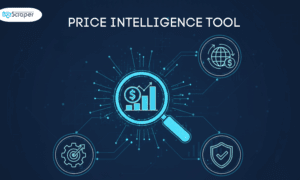Financial forecasting has always been a crucial part of business strategy, but traditional methods often rely on static data and outdated models. Today, data analytics is transforming financial forecasting by offering real-time insights, predictive modeling, and automated analysis. Businesses that leverage these technologies are better equipped to navigate uncertainty, optimize resource allocation, and drive long-term profitability.
How Data Analytics Enhances Forecasting Accuracy
One of the biggest challenges in financial planning is the accuracy of projections. Businesses relying on spreadsheets and historical data often struggle to keep up with changing market conditions. Data analytics tools address this issue by integrating real-time financial data from multiple sources, allowing companies to create more precise forecasts.
Modern analytics platforms analyze patterns in financial data, helping organizations identify trends and potential risks. Predictive modeling, powered by artificial intelligence (AI) and machine learning (ML), enables businesses to anticipate future cash flow, revenue fluctuations, and expense trends. These insights empower financial teams to make proactive decisions, reducing the likelihood of costly surprises.
Data analytics also reduces forecasting errors by accounting for external economic factors, industry trends, and historical performance. With machine learning algorithms continuously refining predictions, businesses can make informed choices based on reliable projections. By combining internal financial data with macroeconomic indicators, companies can better anticipate changes in consumer demand, supply chain disruptions, and market volatility.
Real-Time Insights for Smarter Decision-Making
Static financial reports quickly become outdated, limiting their usefulness in dynamic business environments. Data analytics tools provide continuous updates, ensuring that financial leaders have access to the most relevant information at all times.
For instance, companies using cloud-based financial planning software can automatically consolidate data from different departments, ensuring a holistic view of their financial health. These real-time insights help organizations adjust strategies on the fly, improving agility in response to market shifts.
Businesses that rely on real-time analytics can detect spending anomalies, identify potential cash flow shortages, and adjust operational costs accordingly. This level of insight helps companies avoid financial pitfalls while ensuring capital is allocated effectively. With dynamic financial dashboards, teams can track revenue streams, monitor expense trends, and adjust forecasts in response to shifting business needs.
The Power of Predictive Modeling in Financial Planning
Predictive analytics is revolutionizing financial forecasting by enabling organizations to prepare for multiple scenarios. Instead of relying solely on past data, predictive models use algorithms to analyze historical trends, market indicators, and external factors that influence financial performance.
Businesses can use predictive modeling to run “what-if” scenarios, assessing the potential impact of different economic conditions or operational changes. This allows financial teams to prepare contingency plans and optimize resource allocation. By understanding potential risks and opportunities, organizations can make data-driven decisions that align with their long-term financial goals.
Additionally, AI-driven forecasting can enhance sales and revenue predictions by analyzing patterns in customer behavior. Businesses can fine-tune their pricing strategies, marketing investments, and inventory planning by incorporating data from market trends, consumer sentiment analysis, and competitive benchmarks.
Automating Financial Forecasting for Efficiency
Manual financial forecasting processes are time-consuming and prone to human error. Advanced data analytics platforms automate many aspects of financial planning, reducing administrative workload and increasing efficiency.
Automation in financial forecasting includes:
- AI-powered data consolidation: Aggregates information from multiple sources to provide a unified financial view.
- Smart budgeting tools: Adjust forecasts based on real-time spending and revenue patterns.
- Automated variance analysis: Identifies discrepancies between projected and actual financial performance, allowing for quick corrective action.
- Scenario-based forecasting: Generates multiple financial models based on different business conditions, helping teams prepare for best- and worst-case scenarios.
By streamlining financial forecasting, automation allows CFOs and finance teams to focus on strategy rather than repetitive tasks. This efficiency boost enables companies to react quickly to industry shifts, regulatory changes, and economic fluctuations.
Leveraging Data Analytics for Competitive Advantage
Companies that harness data analytics for financial forecasting gain a competitive edge by making more informed decisions. The ability to analyze trends, anticipate risks, and optimize financial strategies ensures better preparedness for market fluctuations.
For example, businesses leveraging real-time financial data can identify cost-saving opportunities, improve cash flow management, and adjust investment strategies based on predictive insights. This proactive approach reduces financial uncertainty and positions organizations for sustainable growth.
Financial teams that utilize advanced analytics can detect inefficiencies in operational expenses, analyze profitability drivers, and refine budget allocation to maximize return on investment. With access to granular financial data, decision-makers can prioritize high-value projects while mitigating financial risks associated with unpredictable market conditions.
The Future of Financial Forecasting
As technology continues to evolve, financial forecasting will become even more sophisticated. AI, ML, and big data analytics will play an increasing role in shaping financial strategies, and helping businesses navigate complex economic landscapes with confidence.
Emerging trends such as explainable AI (XAI) will enhance the transparency of financial models, allowing finance teams to understand and validate algorithm-based recommendations. Additionally, blockchain-based financial analysis may offer greater security and accuracy in financial reporting, further strengthening trust in data-driven forecasting.
Organizations that embrace data-driven financial planning today will be better positioned for success in the future. By integrating advanced analytics into their forecasting processes, businesses can enhance accuracy, improve efficiency, and gain the insights needed to make smarter financial decisions.
With continued advancements in financial technology, businesses that invest in data-driven forecasting will enhance their decision-making capabilities and gain the agility needed to thrive in an increasingly unpredictable economic landscape.



































